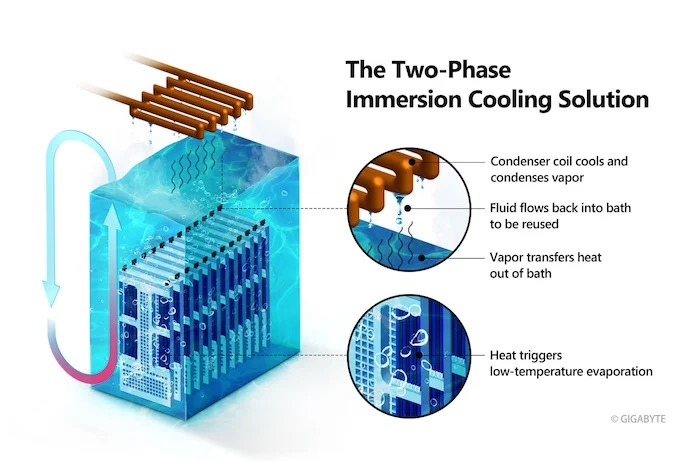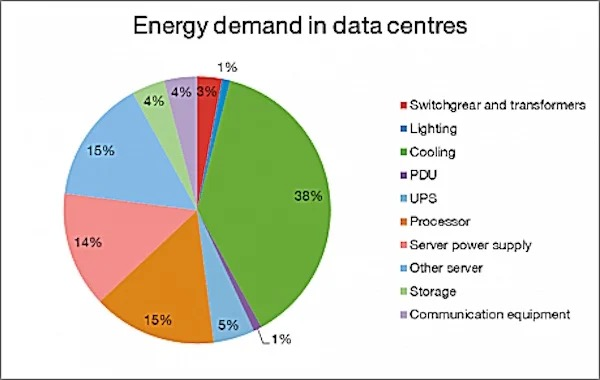Intel Beats the Data Center Heat With Open IP Immersion Liquid Cooling
Intel is aiming at a more sustainable data center with new investments and the industry’s first immersion cooling reference design.
Cooling and Data Center Sustainability
When we think of energy consumption in data centers, we often think of big server racks with powerful graphics processing units (GPUs) and central processing units (CPUs) that burn electricity at a staggering rate. However, some might be surprised to find out that one of the largest contributors to data center power consumption is actually the cooling systems. A staggering statistic is that, in 2018, data centers used an estimated 200 TWh and contributed to around 0.3% of worldwide carbon emissions. It has been estimated that cooling systems such as conventional air conditioning can contribute up to 40% of the data centers' total energy consumption.

Beyond raw energy consumption, cooling systems in data centers can be unsustainable in using other resources. According to reports, data centers in 2014 used about 100 billion liters of water for cooling. Of course, as the industry continues to grow, these trends are only expected to increase if not addressed.
Immersion Cooling for Data Centers
In recent years, one technology that has become popular for more sustainable data center cooling is liquid immersion cooling.
Immersion cooling is essentially a technique in data center cooling where the electronics are submerged in special liquids that exhibit a high thermal conductivity but a low electrical conductivity.

Within this, multiple different forms of immersion cooling exist, including single-phase and two-phase immersion cooling, which operate on similar principles but are implemented slightly differently. One of the significant benefits of immersion cooling is that the liquids used have a significantly higher thermal conductivity than air and can remove heat from the electronics at a much faster rate than conventional, air-based techniques. This reasoning is why immersion cooling is believed to, theoretically, reduce carbon emissions by up to 45% with less wasted resources than conventional options.
Investing in Data Center Sustainability and Cooling
Last week, Intel announced that they would be investing $700 M into a new, innovative research center that would focus on making the data center more sustainable. Within this announcement, Intel has released that the new research center will work on fields including immersion and liquid cooling techniques for the data center, water usage effectiveness, and heat recapture and reuse.
Additionally, Intel also released the industry's first open IP immersion liquid cooling reference design. The reference design was created to be an open, easily accessible, and scalable total cooling solution to improve efficiency and performance in the data center. According to Intel, the proof of concept and initial solution design was completed at Intel Taiwan and is planning to be scaled out globally over the coming years.
By offering an increased investment in immersion cooling and providing essential resources for the industry through its reference design, Intel is betting big on immersion cooling as the cooling technique for future data centers.
Hopefully, its reference design and increased research in the field will lead to more innovation and widespread adoption to ensure a sustainable future.
 中文
中文



.png) Search
Search


 >
>  Return to List
Return to List